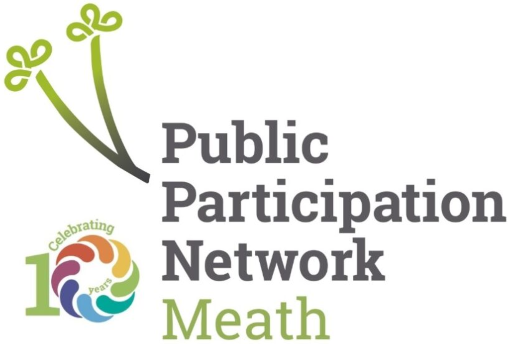Face Coverings: Advice from Dept. Health

When to wear face coverings and how to make them
Advice from Dept. Health. Published at: 15 May 2020. Last updated 11 August 2020
https://www.gov.ie/en/publication/aac74c-guidance-on-safe-use-of-face-coverings/
Wearing of cloth face coverings may help prevent people who do not know they have COVID-19 (Coronavirus) from spreading it to others.
If you wear one, you should still do the important things necessary to prevent the spread of the virus.
These include:
- washing your hands properly and often
- covering your mouth and nose with a tissue or your sleeve when you cough and sneeze
- not touching your eyes, nose or mouth if your hands are not clean
- physical distancing (keeping at least 2 metres away from other people)
Read the Department of Health’s advice on how to protect yourself and others here.
Cloth face coverings
A cloth face covering is a material you wear that covers the nose and mouth.
Wearing a cloth face covering in public may reduce the spread of COVID-19 in the community. It may help to reduce the spread of respiratory droplets from people infected with COVID-19.
Cloth face coverings may help to stop people who are not aware they have the virus from spreading it.
If you have COVID-19 or have symptoms of the virus, you must self-isolate. Do this even if you wear a face covering.
When to wear one
Face coverings must be worn in the following locations:
- shops, including pharmacies
- supermarkets
- shopping centres
- libraries
- cinemas and cinema complexes
- theatres
- concert halls
- bingo halls
- museums
- nail salons
- hair salons and barbers
- tattoo and piercing parlours
- travel agents and tour operators
- laundries and dry cleaners
- betting shops and bookmakers
Wearing of face coverings is also recommended in the following circumstances:
- by people visiting the homes of those who are over 70 years of age or who are medically vulnerable
- by people who are being visited in their homes by those who are over 70 years of age or who are medically vulnerable
The vast majority of people are already wearing face coverings in shops. Shop owners and managers of premises should engage with people entering or in their premises to inform them that they need to wear face coverings and should promote compliance.
To date the Gardaí have adopted an approach of engaging with the public to educate and encourage people to abide by the measures in place and to only use enforcement as a last resort.
The penalty on conviction for not wearing a face covering is up to €2,500 and/or 6 months in prison, but the expectation is that the vast majority of customers will comply and that penalties would only arise in very rare cases.
Posters on use of face coverings are available in English and Irish and can be downloaded here.
What they are made from
Cloth face coverings are made from materials such as cotton, silk, or linen.
You can buy them or make them at home using items such as scarfs, t-shirts, sweatshirts, or towels.
Who should not wear one
Cloth face coverings are not suitable for children under the age of 13 and anyone who:
- has trouble breathing
- is unconscious or incapacitated
- is unable to remove it without help
- has special needs and who may feel upset or very uncomfortable wearing the face covering
Do not criticise or judge people who are not able to wear a face covering.
How to wear one
Video: https://youtu.be/OBR0udoIaiY
A cloth face covering should cover the nose and go under the chin and:
- fit snugly but comfortably against the side of the face
- be secured with ties or ear loops
- include at least 2 layers of fabric
- allow for breathing without restriction
How to wash one
Wash daily in a hot wash over 60 degrees with detergent.
If using a washing machine, you should be able to wash and machine dry it without damage or changing the shape.
You do not need to sterilise cloth face coverings. Wash it in a washing machine or by hand as you would any other item of clothing.
Wash your hands before and after use.
How to make one
To make a cloth face covering at home:
- cut two rectangles of tightly-woven cotton about 25cm x 15cm
- fold and stitch the top and bottom edges
- fold and stitch the side edges, leaving a gap big enough to thread elastic through
- thread two 15cm lengths of elastic through the side edges and tie tight. Hair ties or string, cut longer and tied behind the head, will work
- tuck elastic knots inside the edges of the mask and stitch in place for a neater finish
When to throw it out
You should throw out a cloth face covering when it:
- no longer covers the nose and mouth
- has stretched out or has damaged ties or straps
- cannot stay on the face
- has holes or tears in the fabric
How to use a cloth face covering properly
Do:
- clean your hands properly before you put it on
- practise using it so you are comfortable putting it on and taking it off
- make sure it is made from a fabric you are comfortable wearing
- cover your mouth and nose with it and make sure there are no gaps between your cloth face covering
- tie it securely
- carry unused masks in a sealable clean waterproof bag (for example, a ziplock bag)
- carry a second similar type bag to put used masks in
Don’t:
- touch a mask or face covering while wearing it – if you do, clean your hands properly
- use a damp or wet medical mask or reuse a medical mask
- share masks
- lower your mask to speak, eat and smoke or vape – if you need to uncover your nose or mouth, take the mask off and put it in the bag for used masks
- discard masks in public places
Taking off a cloth face covering
To take it off properly:
- remove it from behind – do not touch the front of the mask
- do not touch your eyes, nose, and mouth
- clean your hands properly
- put disposable masks in a bin straight away
Medical face masks
Medical masks (surgical and respirator) are for healthcare workers. Some workers in specific jobs also use them. They are vital supplies and are not intended for use by the public in the community. We want to try and make sure that medical face masks are kept for health care workers.
Disposable gloves
Do not wear disposable gloves instead of washing your hands.
The virus gets on them in the same way it gets on your hands. Also, your hands can get contaminated when you take them off.
Disposable gloves are worn in medical settings. They are not as effective in daily life.
Wearing disposable gloves can give you a false sense of security.
You might:
- sneeze or cough into the gloves – this creates a new surface for the virus to live on
- contaminate yourself when taking off the gloves or touching surfaces
- not wash your hands as often as you need to and touch your face with contaminated gloves

